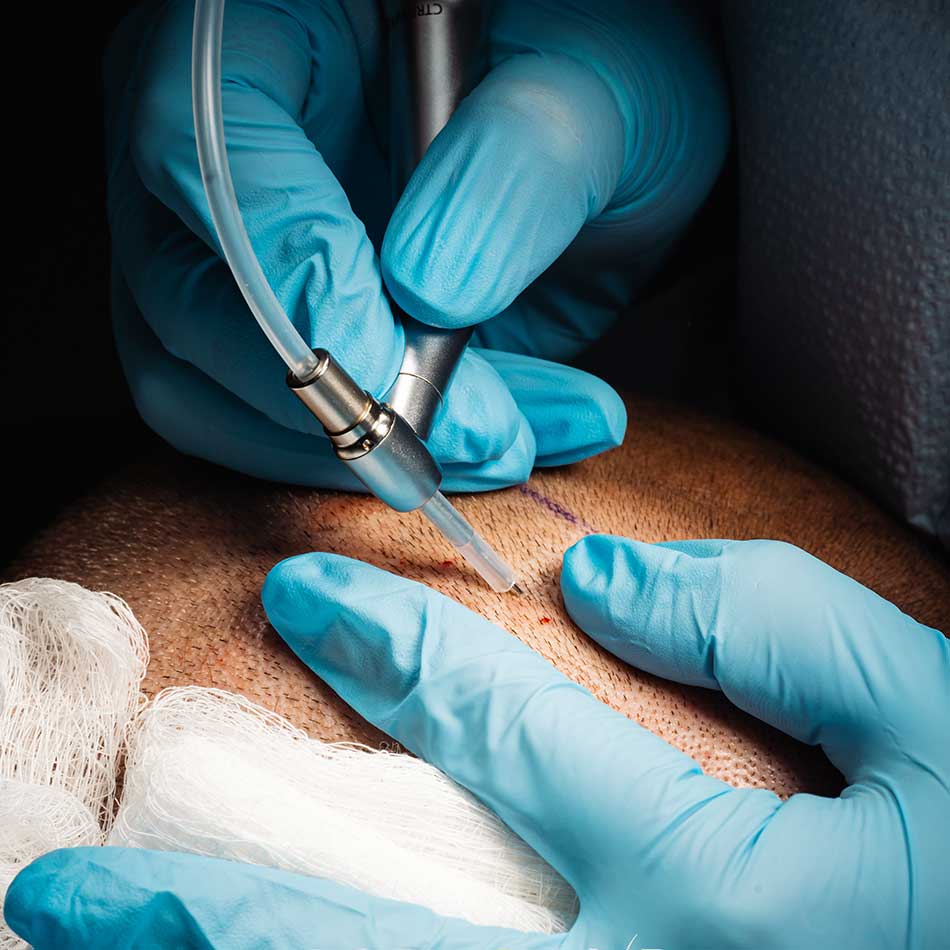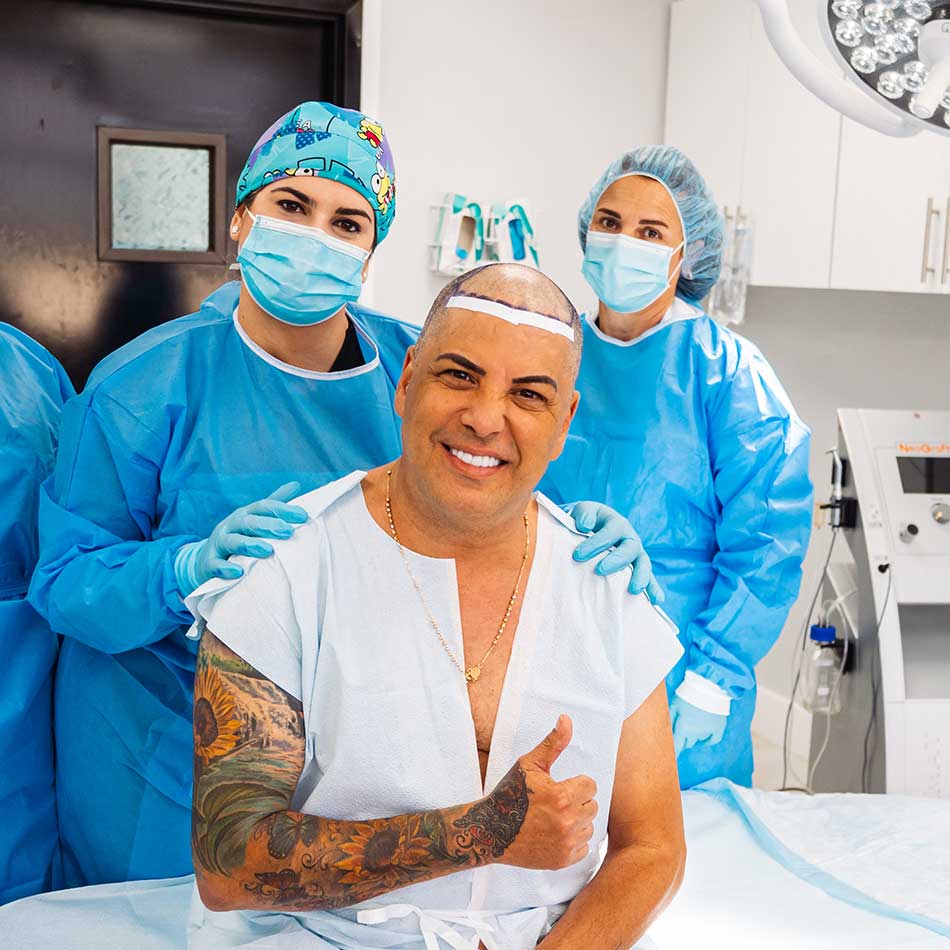
If you want a thicker head of hair or a fuller beard, Care4Hair will make it happen. Our doctor achieves permanent results for men suffering from receding hairlines, patchy beards, and sparse eyebrows through hair transplantation. Permanent, healthy hair grows in the months following a hair transplant procedure, achieving a complete and natural-looking hairline for our male patients.


Care4Hair offers our male patients various hair restoration options. The doctor corrects hairlines, fills patches in the beard, hides scars on the scalp, and reshapes eyebrows via hair transplantation. Types of hair transplant options for men include:


Are you considering a hair transplant but still hesitating to take the next step? Dr. Golio will answer the most common questions about the typical hair transplant procedure in these videos.
FAQs with Dr Golio
Care4Hair transplants hair using two main methods: Follicular Unit Extraction (FUE) and Follicular Unit Transplant (FUT). Both techniques involve removing hair follicles from one area of the scalp and implanting them in another.






Men are more likely than women to experience hair loss at some point in their lives (primarily due to hormonal changes in the body as they age). Approximately 50% of men over 50 show visible signs of hair loss, such as bald spots and thinning areas. While women’s hair sheds in a diffuse pattern, male hair loss concentrates on the frontal hairline and temples in an “M” shape and works its way backward.

A telltale sign of hair loss in men is balding in the temple area. This usually takes place in the earliest stages of hair loss. Thinning in the temples causes the hairline to follow an “M” shape that later recedes to the top or back of the head. If the hairline begins to dwindle in an uneven pattern, it is a sign of a receding hairline; hairlines that are simply maturing recede more uniformly. It is essential to remain vigilant of changes in the hairline and scalp to mitigate the issue as soon as possible. The longer it takes a patient to identify and mediate this damage, the more work will be required.

Hair loss in men under 25-30 years of age fluctuates, making it difficult to determine how it will develop with age. Therefore, we recommend younger patients wait until their hair loss stabilizes to avoid undergoing multiple procedures. You should consider a hair transplant if you are over the age of 25, preferably between 30-50, and are experiencing a stable loss pattern after years of balding.

Not all men are candidates for a male hair transplant. The best candidates for a hair transplant are men with enough donor follicles to complete the procedure. Therefore, patients with diffuse unpatterned alopecia are not ideal candidates for a hair transplant since they usually do not have enough donor follicles to harvest. Men with hair loss caused by other chronic medical conditions may not be ideal candidates for a hair transplant since the illness will cause the hair to keep falling after the procedure. Great candidates for a hair transplant are men whose hair loss is caused by male pattern baldness, trauma


Your recovery time will depend on the hair transplant method and the size of the treated area. Recovery from an FUE hair transplant procedure is reasonably short, as this technique does not require surgical incisions or stitching (unlike the FUT method). Some patients return to work that same day, while others take a couple of days or even an entire week to focus on aftercare. The recovery process should not take longer than 7-10 days. However, it may take up to one year to see full, permanent results.
Some weeks following the procedure, your transplanted hair will go through a resting phase called “shock loss,” which is the body’s natural response to the surgery. During this stage, the transplanted hair sheds entirely. Rest assured that the grafts remain healthy under the skin during shock loss and will grow back if you adhere to all the aftercare instructions.
The cost of a hair transplant is calculated on a per-graft basis. The average cost-per-graft for a hair transplant in the United States is $6.00 to $10.00USD per graft. Care4Hair typically charges between $2.00 and $3.50USD per graft depending on the transplant designated methods and technologies. For a personalized quote, schedule a free consultation with Care4Hair in Miami now!
(305) 262-6070
Yes. Since the follicles are only being moved from one body area to another, they will grow as they would on the zone of origin. You can style and color your hair as you usually would. We recommend waiting 4-6 weeks post-procedure to color your hair and avoid tight hairstyles that pull on the hair and cause it to fall once more.
At Care4Hair, we understand that designing a new hairline requires surgical and artistic skills. Our doctor successfully delivers a natural look for all of our patients by being mindful of hairline shape and positioning and the hair’s density and texture.
A hair transplant involves removing hair follicles from one area of the scalp and implanting them into another. You may be a candidate for a male hair transplant depending on your level of baldness. The hair specialists at Care4Hair will evaluate if you have a viable donor supply at your initial consultation. Typically, bald men have donor follicles in the fringe on the back of the head, which makes them candidates for a hair transplant.
Care4Hair administers a local anesthetic before the procedure begins, so you will not feel pain during your hair transplant.
Shock loss is when the body sheds hair as a response to the trauma of the surgery. While it can be worrying to see your hair fall a few weeks after your procedure, this happens to nearly every patient and is no cause for concern. Your follicles remain intact beneath the skin, and new, healthy hair will grow in the following 2 to 3 months.
Risks associated with a hair transplant include (but are not limited to):
There will always be a risk of complications when undergoing a hair transplant as with any surgical procedure. Since these risks vary depending on the type of transplant you elect, along with your general health, it is essential to disclose your medical history with the doctor at your first evaluation to avoid any unnecessary complications.
Healthy hairs will begin to grow after the shock loss phase that transpires 1 to 5 weeks post-procedure. Your hair will grow steadily in the following months and reach total density after one year. Closely following the doctor's aftercare instructions will ensure the best possible results.